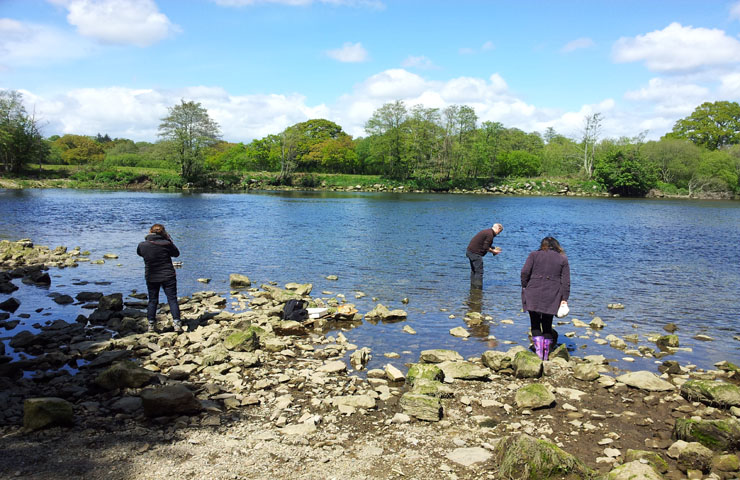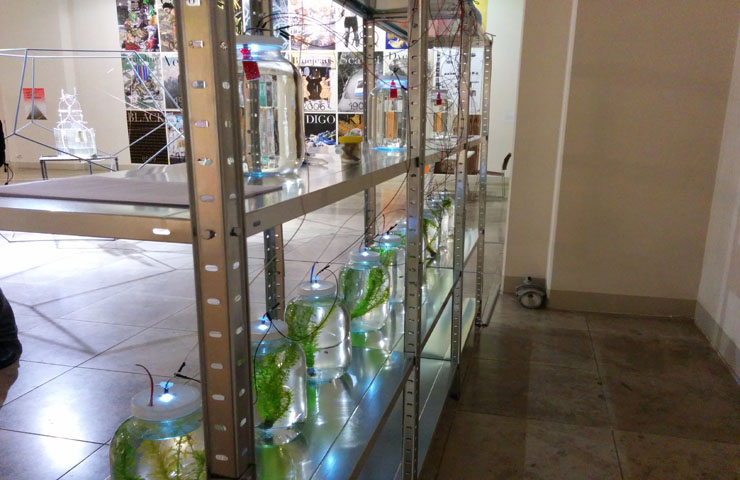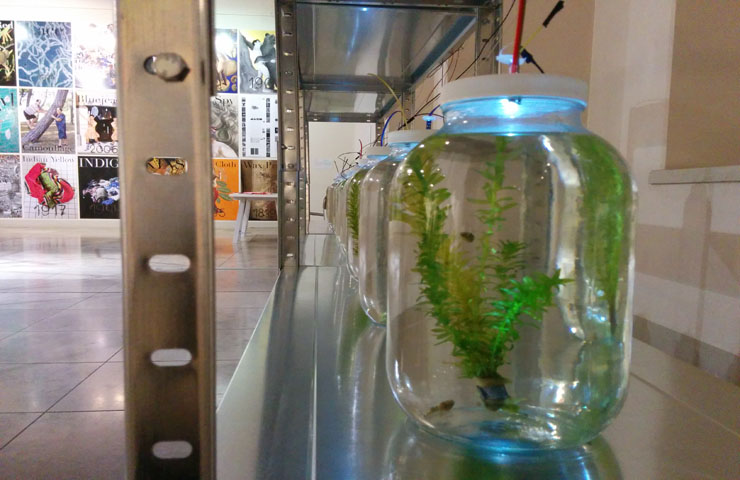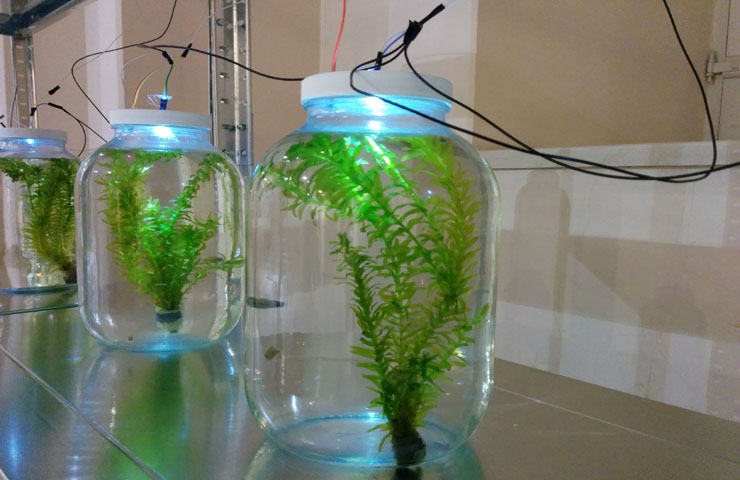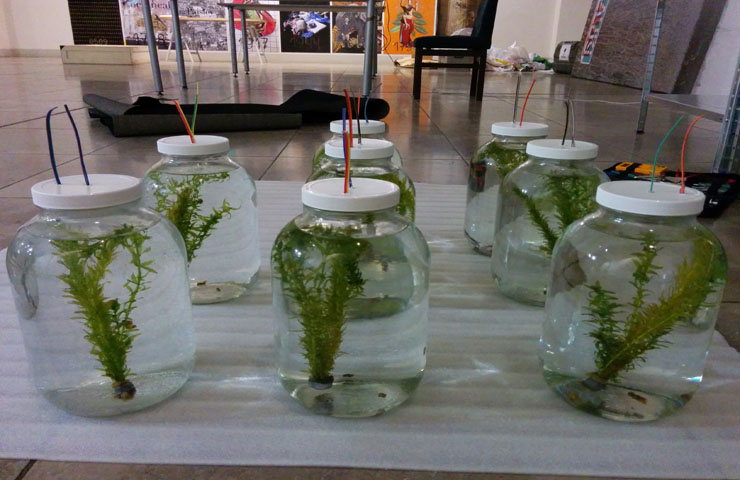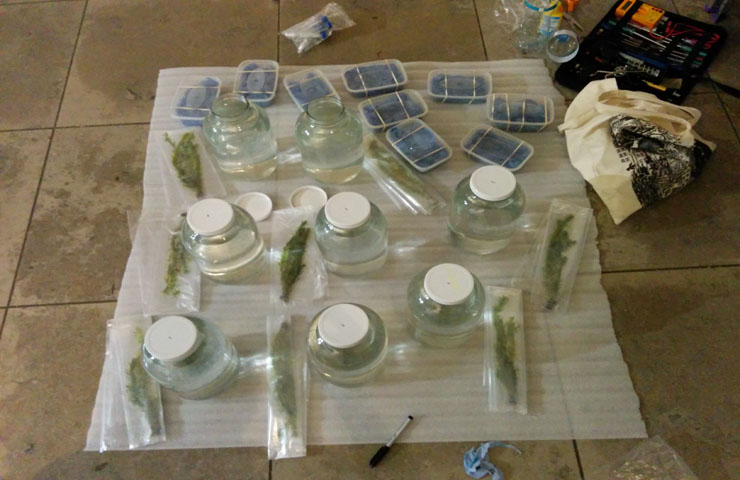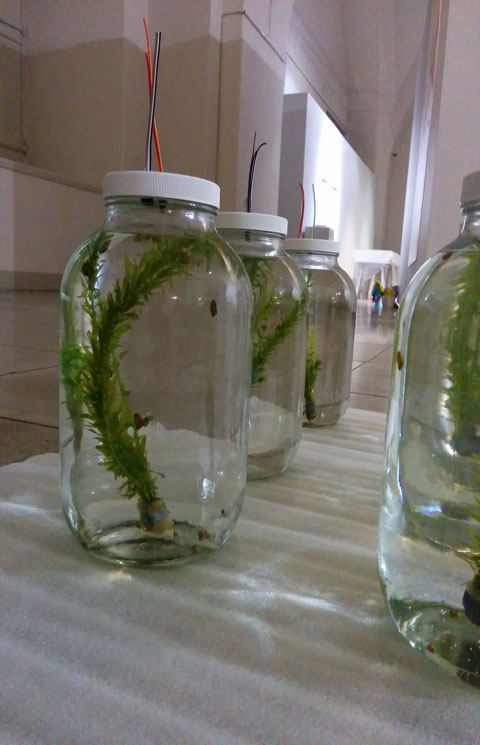Materials:
arduino | LED | salinity sensor | glass jars | radix balthica (snail) | plant | instant ocean | surface transducer |
Research / Inspiration:
Linnaeus
Radix balthica
|
The Radix collaborative group is made up of David Strang, Deborah Robinson and Simon Rundle at the University of Plymouth, in association with Bronac Ferran.
20 a a a able all all also amplo and and and and anfractibus animal antennae as as at at at at balthica base beautiful been beyond big black by castle Cochlea consisted ears elevates end except extreme flat further goes Gotland grains had had has have Helix high Hoburg Hoburg Hoburgen I in in in is is is island islands it Karlsö kind land lay like like little looking lying made Marble most most mountain mountain move narrower Nature not not of of of of of of of on on on on on on one ovatu oxen pairs pellucida perpendicular places point pointed quatuor reddish remarkable rictu rocks root rugis same seen shore shore side side sides similar so some south-east southernmost stands such superficie testa than that that that the the the the the the the the the the the the the the the the the the them they things This thrown to to top Torsburgen two upon very was was water west west which white would on
Radix balthica, the wandering snail, is found throughout NW Europe. Because of its tolerance for extreme and varied environmental conditions this species is an excellent model for determining the traits which species might possess that could be beneficial for survival under altered environmental conditions, such as climate warming and increased saline intrusion into freshwaters.
It was first identified as a type in 1758 by Linnaeus, the famous inventor of the binomial system for classifying species, who named it Helix balthica after collecting it on Gotland. His description of his collection journey forms the basis for the audio aspect of this new installation made specially for Riga and the Fields exhibition by the radix research group at the University of Plymouth. For Fields we connect the laboratory with the field via the text from Linnaeus’s visit to the island of Gotland, on which he collected the type specimen of Radix balthica. This text is presented in its original form and remixed in a form derived using “Radix Sort” a sorting algorithm. Rigging up an improvised laboratory in the gallery we connect live snails (a messy biological entity and subject of ecological and evolutionary scientific investigation) to the origins of Radix balthica and to Radix Sort, an algorithm created in the late 19th c, and associated with the sorting and ordering of data sets and the development of tabulation machines.
Since Linnaeus’s original naming, Radix balthica has been described using several different names. This frequent renaming is almost certainly fuelled by the high degree of variation in its shell form and mantle coloration, often within the same habitat, which has led to problems in designating it as a single species.
Helix balthica LINNAEUS (1758); Limnaeus pereger STEIN (1850); Limnaea peregra KRELINGER (1870); Limnaea limosa KREGLINGER (1870); Limnaea ovata CLESSIN (1876); Limnaea pereger KENNARD & WOODWARD (1926); Radix ovata GEYER (1927); Radix pereger SCHLESCH & KRAUSP (1943); Radix limosa C.R. BOETTGER (1944); Lymnaea pereger MANDAHL-BARTH (1949); Lymnaea ovata ADAM (1960); Lymnaea balthica f. ovate S.H. JAECKEL (1961); Radix peregra ZILCH (1962); Lymnaea peregra LOŽEK (1964); Radix balthica (LINNAEUS, 1758).
Linnaeus's travel journal stated:
"Hoburg is one of the most remarkable things that Nature has made on all Gotland and is very high, like a most beautiful castle, perpendicular on all sides, except that it is in some places narrower at the base than at the top…Marble rocks, so big that 20 pairs of oxen would not have been able to move them, lay thrown upon the shore at the root of Hoburgen, on the west side; they consisted of white and reddish grains, of the same kind as on the Karlsö islands and such as I had not seen on the island…Cochlea testa pellucida, anfractibus quatuor, rictu ovatu amplo, superficie rugis elevates [Helix balthica L.] was also lying in the water by the shore; the animal was black and had two antennae looking like flat pointed ears”.
The snail has since been collected and described from a range of habitats from brackish waters like the Baltic Sea to temporary ponds and rivers such as the Rivers Dart and Tamar near where the radix research collective is based in South West England. It is rumoured to travel on the feet of ducks. The snails found in the gallery have been brought by aeroplane from England and discovered in the Gulf of Riga. Over the next two months we will monitor their response to gallery conditions, light, salinity and atmosphere. How might the audience’s gaze affect the wandering snail?
Links:
Deborah Robinson
Simon Rundle
Bronac Ferran
|
